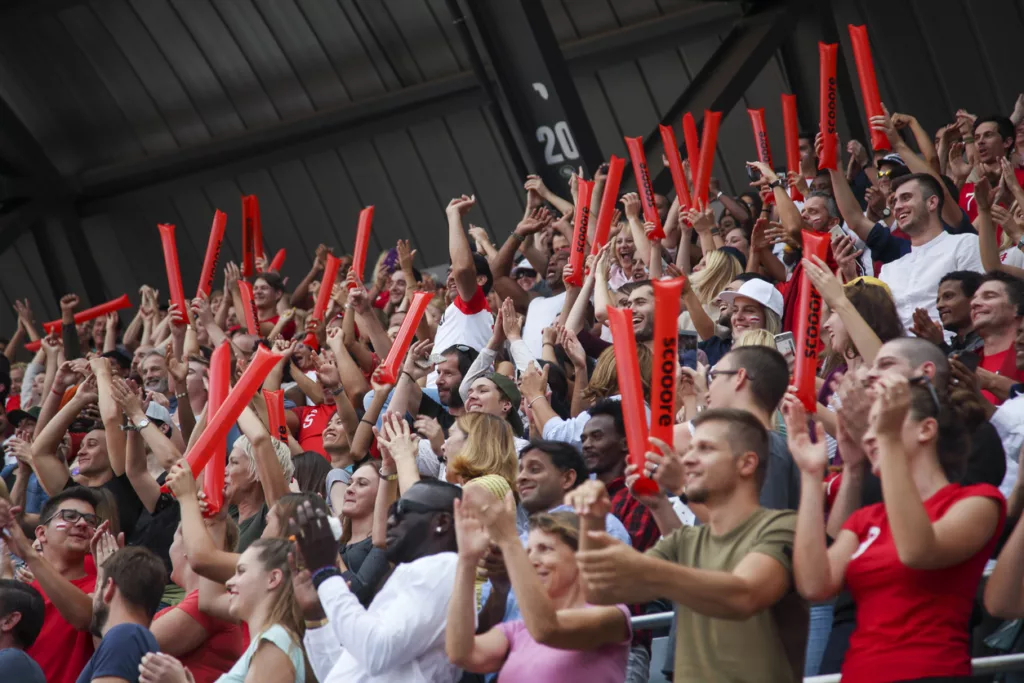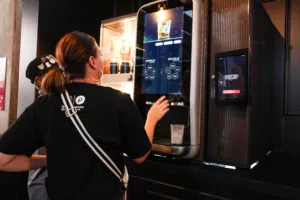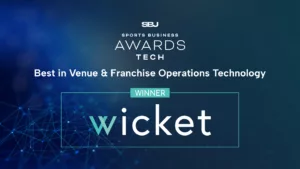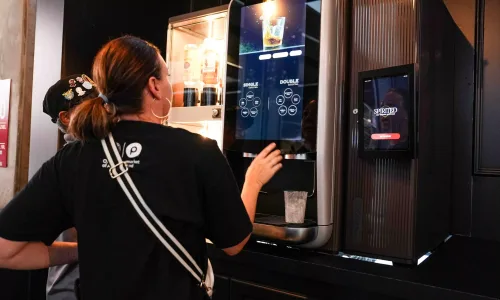A missed extra point for the win or a blown PK can leave fans livid, but win, lose, or draw, long lines are frustrating at every game for guests and owners alike. Tickets to pro sporting events can easily cost several hundred dollars per person, and every second spent caught in a traffic jam at the gate or a long concessions line can leave them questioning whether it was worth the trip.
Waiting twenty minutes to get a bite isn’t just a pain point for a family of four. Fans stuck in a line aren’t paying, and 45% of fans had abandoned a concession line at some point in the past year because the wait was too long. All of this means lost revenue—especially when the thought of fighting the crowds and missing a big play makes them reluctant to get out of their seat.
Fortunately, technology is offering a solution that’s putting a smile on the faces of stadium guests and arena-goers everywhere: biometric authentication. By using guests’ fingerprints, irises, and faces to validate ticketing and make concessions purchases, lines across venues are shrinking and revenues are going through the roof. It’s an exciting equation that’s changing the way franchises think about the fan experience.
What Is Biometric Authentication?
Software and hardware that measures, analyzes, and then identifies someone based on physical aspects of their person are using “biometric” data—”bio-” referring to biology, and “-metric” indicating measurements. It typically involves using a tablet, computer camera, or custom-built scanning device to record and measure some aspect of a user’s body. Then, the software analyzes various unique identifiers and matches them with profiles that are stored in a database.
There are several ways this can be done, and each has its advantages and disadvantages. The three most common are iris, fingerprint, and facial authentication.
Iris Authentication
We all know how expressive and individualized our eyes can be, and it’s no accident that they are a reliable way of identifying someone. The iris, pupils, and retinas are all unique and remain largely unchanged throughout a person’s life. As a result, they are a good source of biometric authentication data.
While it’s an extremely accurate way to create a biological signature, anyone who’s ever used expedited airport security knows how finicky it can be. Glasses have to come off, and to get an accurate reading a user needs to find a precise distance from the camera and then hold still. It also requires expensive software and custom hardware and is extremely memory intensive.
Fingerprint Identification
Fingerprints are one of our oldest methods of biometric authentication—Sherlock Holmes had been dusting for them for 11 years in his adventures before the real Scotland Yard caught on in 1901!
Fingerprint identification differs from other forms of biometric authentication primarily because scanners require a user to make physical contact with the hardware. As a result, it’s highly sensitive to environmental conditions like humidity and heat (sweaty fingers don’t work well on your Mac!).
That means fingerprinting is not ideal for outdoor applications or in unregulated environments, and it tends to have around a 1% error rate. That may not seem like much, but when there are 70,000 fans showing up for a game, 700 of them are going to be holding up the lines with frustrating experiences.
Facial Authentication
If you’ve ever unlocked an iPhone with your face, you know why facial data provides one of the most popular and reliable biometric authentication methods. By taking a few specific measurements of your prominent features, developers can create a facial signature that remains identifiable, consistent, and easily updatable as necessary.
Facial authentication is a standout in biometric authentication because it tends to be simpler to design software and hardware to collect and analyze data and isn’t particularly picky about environmental issues or distance requirements. It boasts extremely fast processing speeds, and because it doesn’t require special technology, it’s simple for users to set up using their mobile device or computer camera.
Biometric Authentication Solutions for Live Events
Every sport has its legions of fans who are fanatical about the drama and excitement of a live game. But whether it’s crazy dunks, cracking slap shots, or Hail Mary 70-yard bombs, all of these events have one thing in common—tens of thousands of fans to manage at a stadium or arena.
Getting people in and buying hotdogs and beer represent massive logistical challenges that start and end with long and time-consuming lines for guests. Whether it’s ticketing or concessions, every second spent negotiating one of these bottlenecks means another missed highlight for ticket holders.
Biometric authentication is changing everything. By linking ticketing accounts and payment methods to biometric profiles, venues can save thousands of dollars and dramatically speed up lines by turning fumbling through pockets and wallets into a simple touch or smile. By deploying these solutions, wait times can be cut by as much as 4x per lane.
However, not every biometric authentication solution is a good choice for the wild and exciting atmosphere of a live sports event. While the right technology can delight fans and save venues hundreds of thousands of dollars a season, the wrong one can do exactly the opposite.
Picking the Best Biometric Authentication Solution for Sports Fans
The most important thing to remember when picking a biometric solution for a sports or entertainment event is that people are there to have a great time. That means it has to be low hassle, accurate enough to ensure it’s not an obstacle, and keep their data secure so they never have to worry about anything but the game. As it turns out, only facial authentication is well suited to sports environments.
Iris scanners are incredibly accurate, but they are slow to use because they require people to stand perfectly still at an optimal distance from the machine. That’s never going to happen quickly with legions of amped-up fans clambering to get on the field, and on top of that, it’s extremely expensive to implement.
Fingerprinting can be fast, but it has two major drawbacks. First, the idea of thousands of fans all touching the same fingerprint scanner is… a little gross. Games in Cleveland may be chilly, but nobody wants to come home with a cold. Second, ticket gates are a transition point from inside and outside, and with most places having highly variable weather, temperatures, and humidity, there are a lot of opportunities for fingerprint devices to struggle—not to mention taking off gloves and freezing fans’ fingers!
Facial authentication is the only solution that is fast, reliable, and easy enough to use for live sports applications. Because it just requires a simple smile, it can confirm a facial signature in as little as 300 milliseconds, which means fans will be through the gate or paying for beer and hotdogs in just a few seconds instead of minutes. It’s also flexible enough to capture data from different distances easily, and patrons can group tickets to one profile so kids don’t have to worry about the camera. It’s quick and fun, and it’s wowing guests at major sports events across the country.
Wicket’s Facial Authentication Is Head and Shoulders Above the Pack
Wicket is the undisputed heavyweight champion of facial authentication solutions for the sports and entertainment industries. It can be onboarded in as little as 30 days to accelerate traffic anywhere there’s a line, and guests can opt in and opt out whenever they like. Express Access lanes make ticketing a snap, and Express Beer means fans never have to miss a game-winning touchdown waiting in the wings.
Best of all, Wicket’s biometric authentication lanes are saving teams $8000 per lane per season at the ticket gate, and they’re already delighting fans at NFL, MLB, and MLS games across the country.
Contact us today to discover the sensational event experience guests, fans, and employees love.







